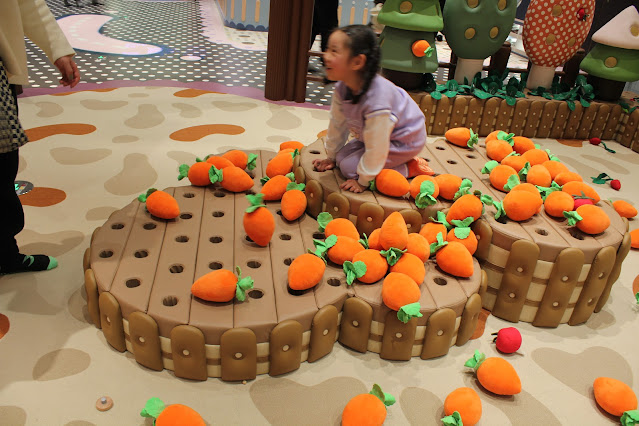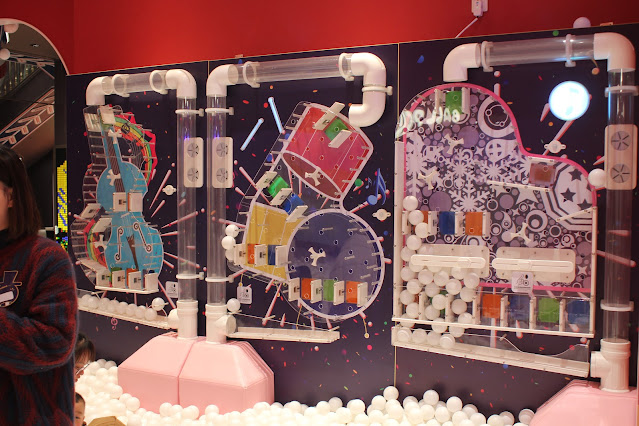How to Determine the Cost of an Indoor Playground?
- Venue Height
The height of your venue significantly influences the cost of your indoor playground. A taller venue offers the possibility of constructing larger, multilevel structures. Taller structures can include features like higher slides, elevated playhouses, or taller climbing structures. However, these larger, more complex structures can be significantly more expensive due to increased material and labor costs.
Furthermore, taller structures require more stringent safety precautions. Higher structures necessitate additional safety elements like higher safety railings, more cushioning on the floor, and the installation of safety netting. All of these safety additions add to the overall cost.
- Product Structure
The selection of play structures can drastically affect the overall cost of your playground. Basic structures, such as a simple playhouse or climbing frame, will typically be more affordable. These structures are less complicated to produce, reducing manufacturing costs, and require less time and fewer resources to install.
On the other hand, custom equipment like themed playhouses or complex mazes can increase costs. These more specialized structures often require unique parts and additional labor, both of which increase production costs. They also require longer installation times, further driving up the cost.
Interactive digital games, while popular, can also be expensive. The technology required for these games is typically more costly, and they require specialized installation and maintenance.
Moreover, quality and safety standards play a huge role in cost determination. Higher-end equipment often provides better safety, durability, and play options, but this comes at a cost. Selecting equipment that meets rigorous safety standards, while pricier, is also a key consideration in ensuring the safety of children.
- Transportation Cost
The cost of transporting your playground equipment from the manufacturer to your location is another significant cost. Transport costs are determined by factors such as the size and weight of the equipment, the distance it needs to travel, and the mode of transportation.
Bulky and heavy equipment will typically be more expensive to transport. Additionally, if your supplier is in another country or if you are located in a remote area, this can significantly increase shipping costs.
You should also consider the logistics of moving the equipment into your venue. Some equipment may require disassembly for transport and then reassembly on-site, adding to labor costs.
- Installation Costs
Installation costs can vary widely based on the complexity of your playground. Installing simple equipment can be relatively inexpensive, while complex structures often require more skilled labor and more time, which can significantly increase costs.
Safety surfaces, structural supports, and other elements that need to be installed with the equipment can also increase costs.
- Tariff Considerations
If you're importing playground equipment from another country, it's crucial to factor in the cost of tariffs. Tariffs can vary greatly from one country to another and can significantly increase the overall cost of your equipment. Additionally, understanding and complying with import regulations can often necessitate the hiring of a customs broker, another potential cost.
Import regulations and tariffs can be complex and difficult to navigate. It's advisable to consult with an import/export specialist or a customs broker to ensure that you are accurately estimating these costs and complying with all relevant regulations.
- Venue Rental
The cost of renting a venue for your indoor playground can also greatly affect your budget. This cost will largely depend on the size of the venue, its location, and local rental rates.
In urban areas, rental costs are typically higher due to the increased demand for space. However, a location in a high demand area may also result in more customers, offsetting the higher rental costs. On the other hand, venues in suburban or rural areas may have lower rental costs but might also attract fewer customers.
You should also consider the condition of the venue. A cheaper venue might require substantial renovations to make it suitable for an indoor playground, which can significantly increase costs.
- Operational Costs
Running an indoor playground involves various ongoing costs. These can include utilities, staffing, cleaning, maintenance, insurance, and marketing.
Utility costs such as electricity, heating, and water can be significant, especially for larger venues. Depending on your venue's size and the type of equipment you have, you might also require substantial power for lighting, digital gaming equipment, and other electronics.
Staffing costs are another significant operational expense. This includes not only salaries, but also benefits, training, and uniforms for your employees.
Cleaning and maintenance costs are another essential part of operating an indoor playground. Regular cleaning is crucial to maintain a safe and healthy environment, and equipment needs to be inspected and maintained regularly to ensure safety.
Insurance is another critical operational cost. Insurance for an indoor playground can be quite expensive due to the risk of injuries.
Marketing costs can also add up. From signage and promotional materials to online advertising, getting the word out about your indoor playground can be a significant part of your budget.
- Other Factors
Other potential cost factors include permits and licensing fees, professional fees (such as legal or design consultation), and marketing or promotional costs.
Permits and licenses can be a significant expense, especially in areas with high regulatory fees. You may also need to pay for inspections to ensure your playground meets all safety standards.
Professional fees can also add to your budget. Depending on your background and skills, you may need to hire architects, designers, or consultants to assist with various aspects of your project.
Conclusion
In conclusion, the cost of setting up and running an indoor playground can vary greatly based on a wide range of factors. It is essential to carefully consider each of these factors and to develop a comprehensive budget that accounts for all potential costs. By doing so, you can ensure that your indoor playground is not only fun and safe for children but is also a profitable business venture.
The successful creation and operation of an indoor playground require careful planning, strategic decision-making, and meticulous budget management. The more detailed and accurate your budget is, the better equipped you will be to manage costs and ensure the success of your playground.



Comments
Post a Comment